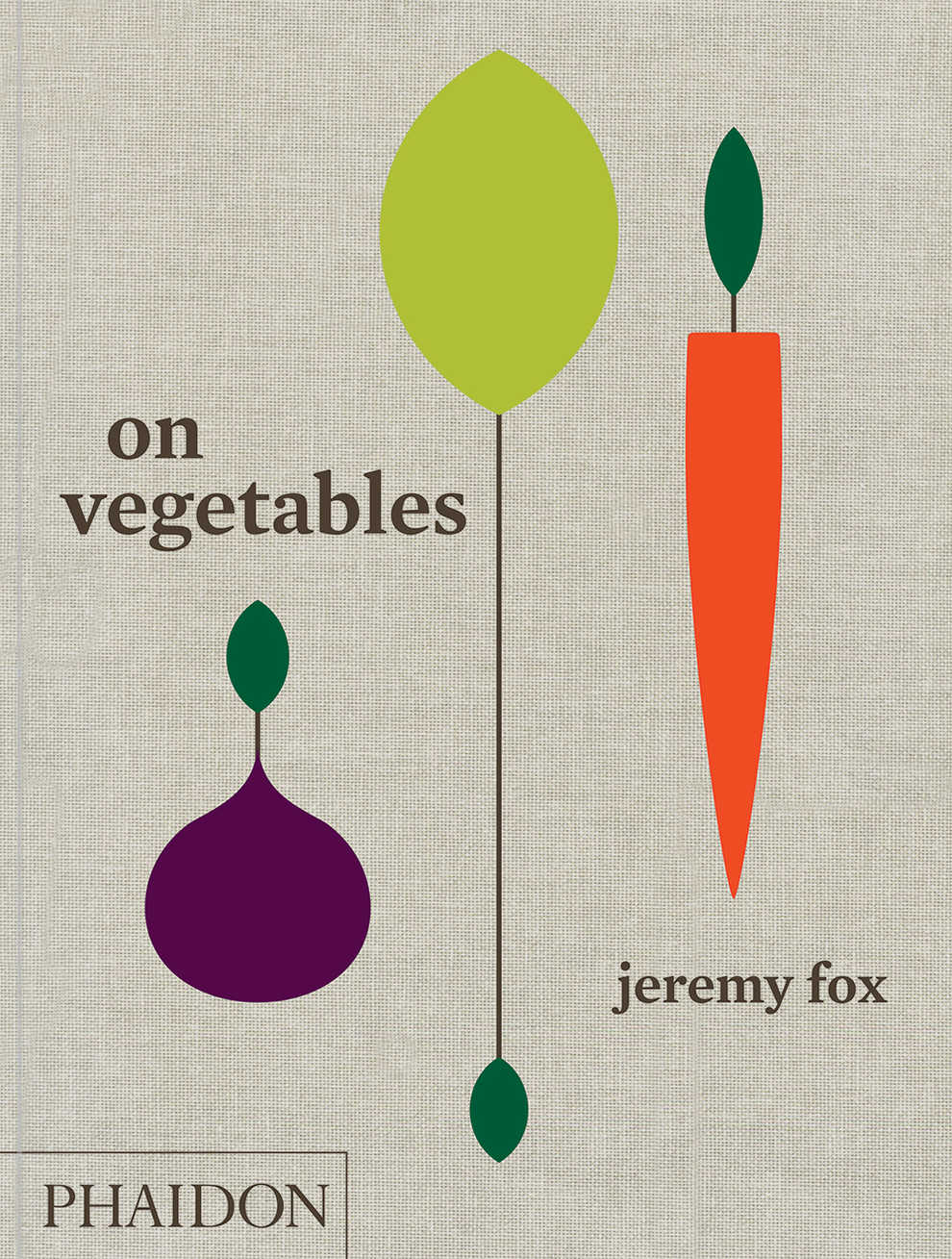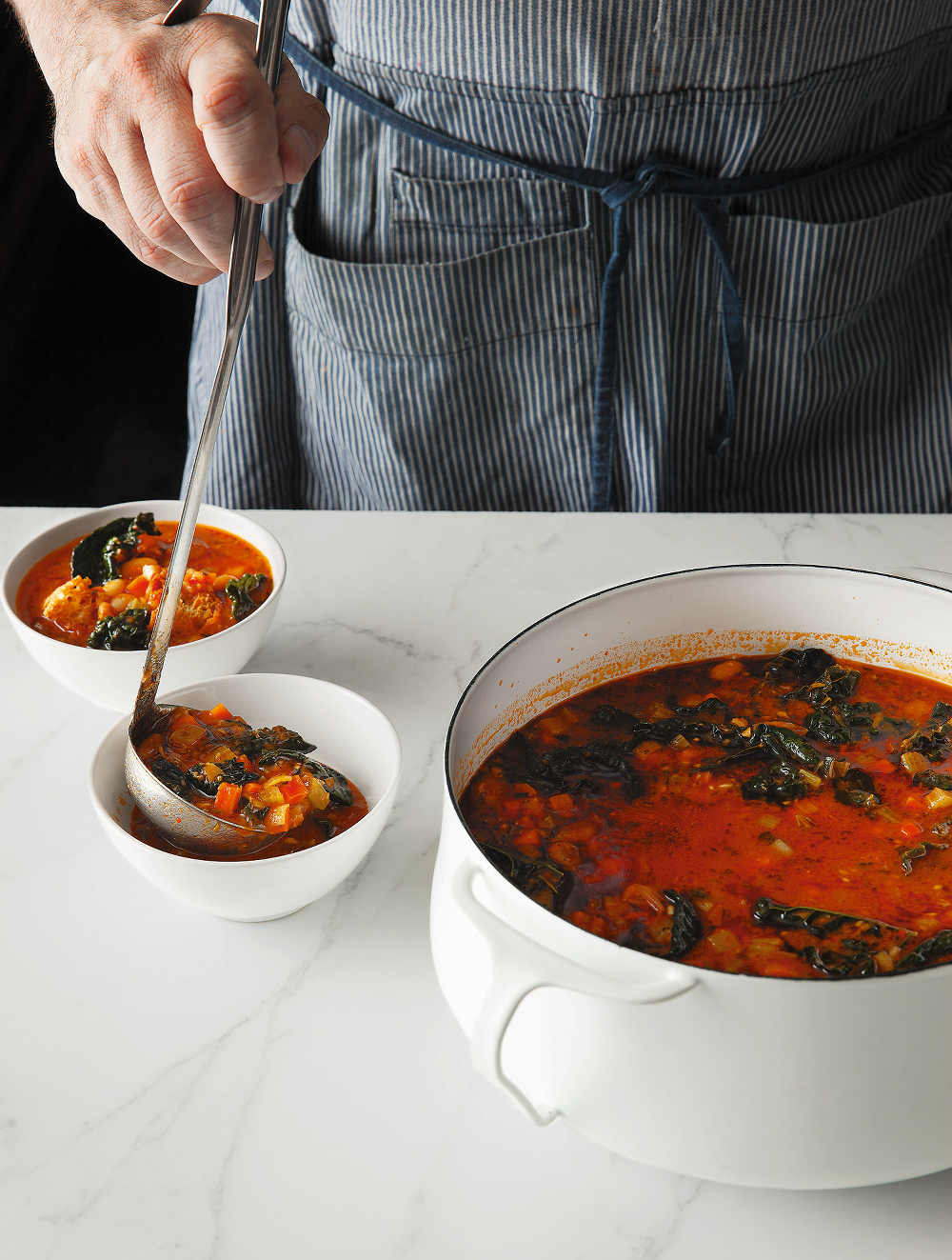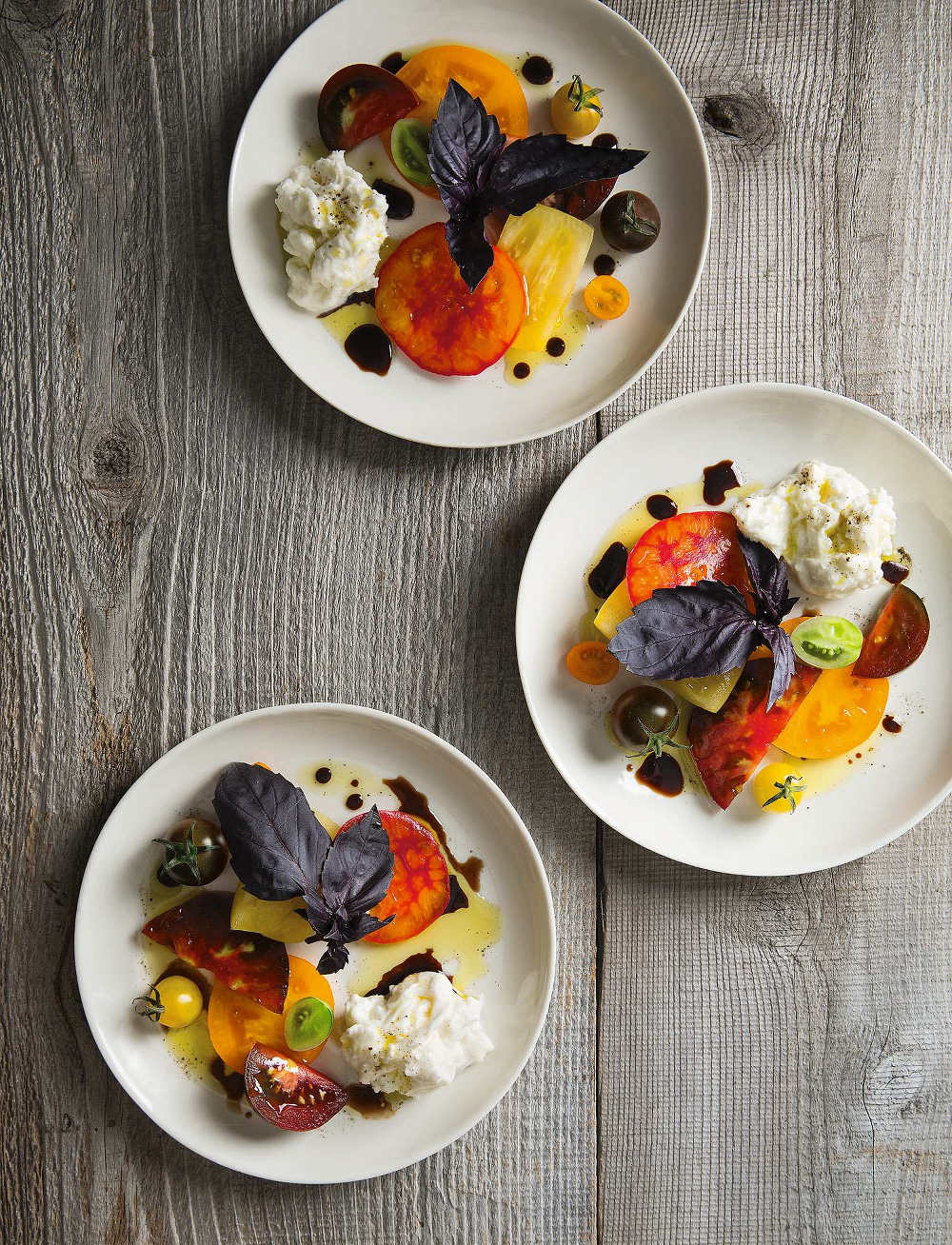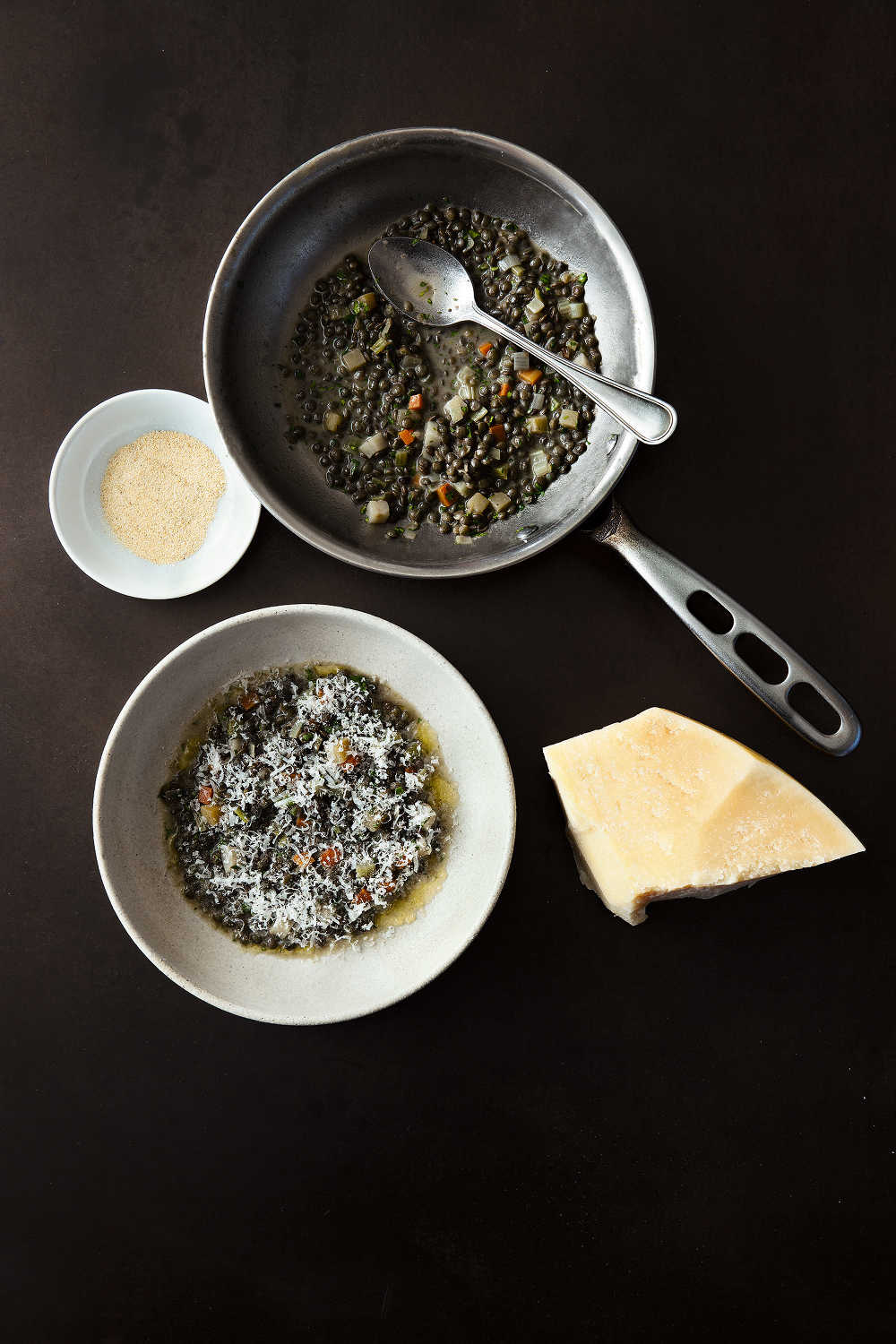Georgina Campbell's Cookery Feature - Vegetable Based Cuisine

Although vegetables have only come into the culinary spotlight relatively recently, it’s hard to recall a time when they were inevitably relegated to the supporting cast, as ‘sides’ and many of our most creative chefs now make no bones about giving them the starring roles.
The ultimate compliment, by non-vegetarians, is to say that ‘you wouldn’t miss the meat’ and, while that may seem condescending to those whose philosophy embraces the sustainability of a vegecentric world, it rings true for mainstream diners.
In Ireland, the pioneer was, of course, Dennis Cotter of Cork’s Café Paradiso who, since 1993, has enchanted diners of all persuasions with his beautiful and wonderfully flavoursome modern vegetarian cooking, much of it based on the produce from nearby Gort na Nain Farm.
And anyone familiar with Dennis Cotter’s philosophy will also have some understanding of the culinary mindset of the esteemed Californian chef, Jeremy Fox of Rustic Canyon and Ester’s Wine Shop & Bar, whose much anticipated book On Vegetables: Modern Recipes for the Home Kitchen, written with Noah Galuten, has recently been published by Phaidon (£29.95). Jeremy Fox is not a vegetarian, however (‘I eat steak. I cook pigs’ trotters on a regular basis…’), but he believes that plants also deserve our full attention.
Described in the press release as “The perfect cookbook to inspire those with a passion for beautiful vegetable-based cuisine, looking to create quality recipes at home”, On Vegetables “gives us a glimpse into the mind of a one-of-a-kind chef, the simple pleasures of being in the kitchen and the enriching power of food” and, through its 160 recipes (including his signature dishes), showcases the extraordinary variety of textures and flavours that can be achieved by cooking with vegetables.
Central to the book is Fox’s early experience at his ‘Ubuntu’ restaurant in Napa Valley, which opened quietly in 2008 but almost immediately became a sensation due to an early New York Times review that led him on an extraordinary personal and professional roller coaster and eventually to its closure in 2012. This story - the fame, the fall, the struggle with anxiety and ADD, and the journey to recovery - is part of the book, and addresses the pressures faced by many top chefs. But through his love of food and cooking, Fox managed to ‘unite his food and his brain’ and began cooking for himself with vision, clarity and joy.
Regaining his passion in the kitchen led him to Rustic Canyon and later on to Ester’s Wine Shop & Bar to further refine his vegetable-driven cuisine. Jeremy and the restaurants are now thriving; having the energy to concentrate more on the kitchen, suppliers and his team, Jeremy recognises that ‘his food, rather than himself, is much better suited to being in the spotlight’.
With all this background to absorb, On Vegetables is not an easy book, but - although time consuming (and that is the point) the recipes are not especially difficult and it will be rewarding to those who enjoy giving the time to a job well done. It is reminiscent, in some ways, of Rory O’Connell’s Master It, with everything done from scratch and no short cuts allowed.
Organised alphabetically by vegetable, the recipes are specially designed to change the way you approach vegetarian cooking by placing them at the heart of every dish. Some ingredients may be unfamiliar to European readers but On Vegetables has the added interest of portraits and essays about the farmers with whom Fox works closely and the rich diversity of Californian produce.
Beautifully illustrated with 150 images of Fox’s strikingly crafted dishes and atmospherics, this would be a wonderful gift for the serious food lover - which may quite possibly be yourself.
RECIPES from: On Vegetables by Jeremy Fox published by Phaidon, photography by Rick Poon

Rustic yellow eye bean stew, torn bread
During the tougher times at Manresa, before the restaurant gained critical esteem, we tried our version of a bar menu, called the “Patio Menu,” which focused on straightforward dishes, and this stew came out of that effort. I kept refining the stew over time, and I eventually found a specific bean that I really loved: Rancho Gordo Yellow Eye Bean.
The bean held its shape, but stayed creamy and didn’t burst or overcook. The stew became really popular at Ubuntu and eventually people would come in just to order it. Brothy and garlicky—one of the heartier things on the menu—it’s one of only a handful of dishes that I never get tired of making and eating.
Note: Give yourself a one-day lead time for this recipe, as you’ll need to soak the beans overnight. You can also start cooking the stew while the beans are cooking. If the beans aren’t ready in time, just turn the heat off on the stew and wait for the beans to catch up. After picking the rosemary leaves, keep the stems to use in conjunction with the mirepoix when cooking the beans.
Should you be unable to find yellow eye beans (Rancho Gordo being my favorite source), any dried bean you like will work just fine
serves 6 to 8
yellow eye beans
stripped rosemary stems
2 celery stalks
1 carrot, halved lengthwise
1 leek, halved lengthwise, tough green parts trimmed off
stems from 1 bunch flat-leaf parsley
1 head garlic, halved horizontally
1 pound (455g) dried yellow eye beans, soaked overnight
kosher salt
yellow eye bean stew
1 cup (240ml) extra-virgin olive oil, plus more as needed
8 ounces (225g) diced carrots
kosher salt
8 ounces (225g) diced celery
8 ounces (225g) diced leeks (white and light green parts only; save the tougher green tops for another use, such as vegetable stock)
1 bunch hearty greens like kale or collard greens, ribs removed and roughly chopped
1/2 cup (200g) chopped garlic (germ removed)
3/4 cup (60g) chopped fresh rosemary leaves
1 teaspoon chili flakes
1 cup (255g) tomato paste (purée)
to serve
about 1 pound (455 g) crusty bread, torn into bite-size pieces
extra-virgin olive oil
kosher salt
Make the yellow eye beans
Pick the leaves off the rosemary sprigs and set the leaves aside for the stew. Take the rosemary stems and, using kitchen twine, tie them into a bundle with the celery, carrot, and leek.
In a double layer of cheesecloth, combine the parsley stems and garlic halves and tie up to make a sachet. Place the beans, aromatics bundle, and sachet in a large pot and cover with 12 cups (2.8 liters) of water.
Bring to a simmer over medium heat, reduce the heat to low, and cook the beans just below a simmer, uncovered and skimming off any foam that rises to the top, until they have a creamy texture but are not falling apart. Depending on the freshness of the beans, this could take anywhere from 45 minutes to 21/2 hours.
Remove and discard the bundle and sachet and season the beans with salt until the broth tastes good by itself. Remove the pot from the heat and set the beans and cooking liquid aside until you’re ready to make the stew.
You could let the beans cool to room temperature and then refrigerate until you’re ready to make the stew.
Make the yellow eye bean stew
In a large pot, warm the olive oil over medium heat. Add the carrots first (they will take the longest), season with salt, and cook, stirring occasionally, for 5 minutes. Add the celery, leeks, and greens and season with salt. Allow them to cook down, stirring, for about 5 minutes.
Add the chopped garlic, rosemary, and chili flakes—you want the garlic to become fragrant but not browned. Add the tomato paste and stir thoroughly to combine. Cook for about 2 minutes, allowing the tomato paste to toast. At this point, all of the vegetables should be cooked through but still have a bite. Taste them to make sure, and if they have too much bite, let them go a little longer.
Add the cooked beans, along with their liquid, and bring the pot to a simmer. Taste and adjust the seasoning. Remove from the heat.
To serve
Toss the bread with a touch of olive oil and season with salt. Toast over medium heat in a large sautée pan until crispy on the edges, 3 to 5 minutes. Ladle the stew into bowls, and then follow with the toasted bread. Finish with a drizzle of olive oil.

Tomato Raw Bar
A tomato raw bar—which is a bit loose as far as recipes go and asks for a little creativity on your end—is a fun way to serve tomatoes while highlighting their delicious simplicity. Just as many varieties of oysters pique people’s curiosity, tomatoes deserve equal attention. Jeff Dawson, the head farmer at Ubuntu, used to grow over thirty different varietals of tomatoes for me, some of which—such as Copia, Sharon’s Surprise, and Foxheart (which he named after me)—he even bred himself.
serves 4
2 pounds (900 g) tomatoes, many varieties, cored
1 pound (455 g) burrata cheese
3 to 4 tablespoons extra-virgin olive oil
flaky sea salt
cracked black pepper
2 tablespoons saba
basil leaves, for garnish
Cut the tomatoes into various shapes and sizes—have fun with it. You can even take an apple corer and cut out some funky little tube shapes.
Divide the tomatoes across plates and place a generous dollop of burrata alongside. Drizzle with olive oil and season with flaky sea salt and cracked pepper. To finish, garnish with the saba and basil.

Lentils, garlic & parmesan
My mom didn’t cook a lot, but one thing she did “cook” was canned Progresso lentil soup with a ton of garlic powder and canned Kraft Parmesan cheese. Those things thickened it into a gloppy, grainy sort of mass, but I loved it anyway. I feel that a lot of what drives a chef is nostalgia, and a desire to re-create poignant food memories from their lives. As unsophisticated as this is, it’s a deeply ingrained food memory for me. Here is my grown-up version of the canned lentil soup of my childhood.
Note: The homemade garlic powder must be made in advance, as it takes about 2 days to dehydrate.
serves 4 to 6
1 pound (455 g) green or black lentils, rinsed and picked over
4 ounces (115 g) finely diced carrots
4 ounces (115 g) finely diced celery
4 ounces (115 g) finely diced leeks, white and light green parts only
4 ounces (115 g) finely diced celery root (celeriac)
4 ounces (115 g) finely diced rutabaga (swede)
kosher salt
2 tablespoons (30 g) unsalted butter
2 tablespoons chopped flat-leaf parsley
1 cup (60 g) grated parmigiano-reggiano cheese
1 to 2 tablespoons Garlic Powder, to taste
extra-virgin olive oil, for serving
In a large pot, combine the lentils and 6 cups (1.5 liters) water. Bring to a light simmer over medium-high heat and cook the lentils for 20 minutes, skimming off any foam that floats to the surface.
Add the carrots, celery, leeks, celery root, and rutabaga. Season with a little salt—just not too much, as it will continue to cook down.
Cook the soup, uncovered, until the lentils and vegetables are tender, 15 to 20 minutes. Taste and adjust seasoning as needed. Stir in the butter and parsley until incorporated.
To serve, ladle the soup into bowls. Sprinkle with freshly grated Parmiganio, garlic powder, and a few drops of olive oil.
garlic powder
Yes, you can easily buy this seasoning, but there is something about edible powder made in a giant industrial factory that makes me decidedly uncomfortable. Also: if you buy really good garlic, guess what? It makes really good garlic powder.
makes about 1/2 cup (72 g)
2 cups (200 g) sliced garlic cloves, germ intact
Arrange the garlic in a single layer on a dehydrator tray and dehydrate at 135°F (57°C) for 48 hours, until completely dry.
Grind in batches in your spice grinder until you have a fine powder.
Store in an airtight container at room temperature for up to 3 months.






There are currently no comments
Leave a comment
Not a member? Register for your free membership now!
Or leave a comment by logging in with: